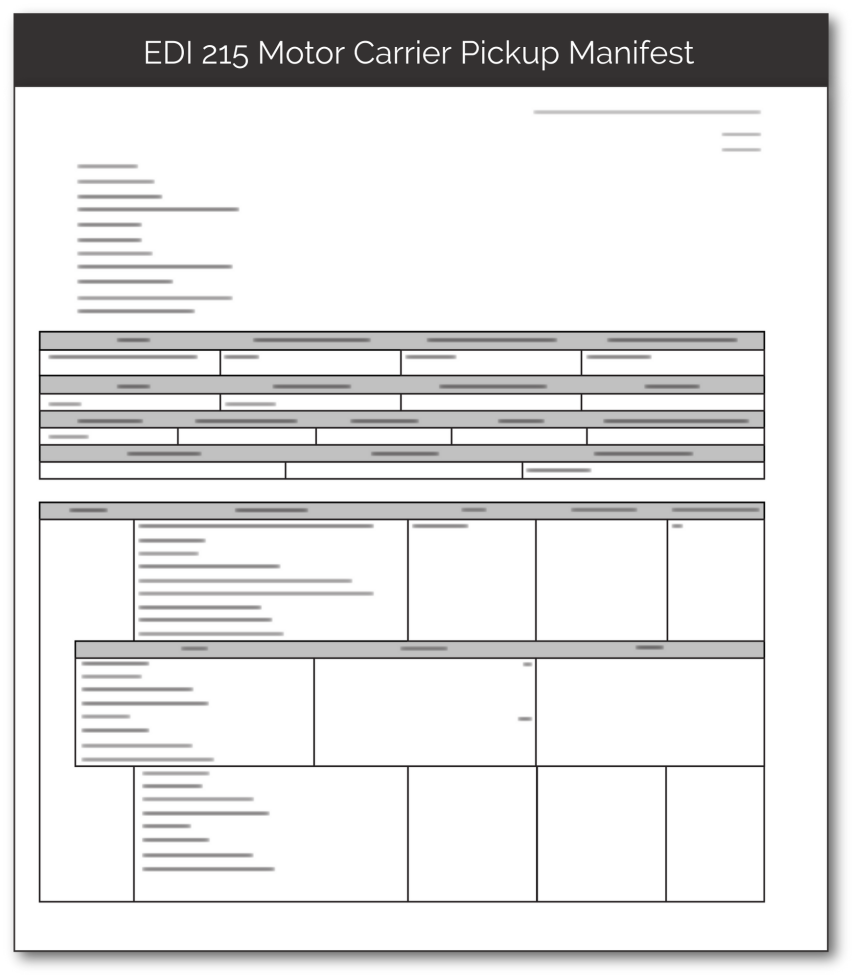EDI 215
Motor Carrier Pickup Manifest

What is an EDI 215?
EDI 215 is an electronic data interchange document that replaces the need for a paper Motor Carrier Pickup Manifest. This document is sent from a shipper, to a carrier, and contains details about shipments the carrier needs to pick up.
EDI 215 documents follow the x12 format set by the American National Standards Institute (ANSI), a not-for-profit organization that regulates EDI formats in the U.S.
What are the Essential Components of EDI 215?
EDI 215 provides a carrier with the list of shipments that need to be picked up. The document tells a carrier everything they need to know about a pending shipment or group of shipments. Details can include, but are not limited to:
- Vendor number
- Ship to/from information
- Shipment contents, such as
- Product/carton/pallet quantities
- Shipment weights and dimensions
- Scheduling details
- Shipping Instructions
- Payment identifiers
- Shipping rates and charges

Array
Shippers may send EDI 215 regularly, updating it as shipments are picked up, and new shipments are accepted by the carrier. However, sending an EDI 215 document does not replace the need for an EDI 211; though 215 also contains shipment details, it is not a legally binding document. EDI 215 also cannot be used to tender a load or schedule a pickup appointment. Rather, EDI 215 serves to manifest, or display, the shipments, their contents, and pertinent details for use by the carrier.
After receiving EDI 215, the carrier will respond with an EDI 997 transaction to confirm receipt.
What are the Benefits of EDI 215?
Like most EDI documents, EDI 215 can be fully automated. This eliminates the need for manual data lookup and re-entry, which is both time-consuming and error prone. Because integrated EDI pulls data directly from systems like your ERP or WMS, you can be assured the information is accurate and up to date. This also helps streamline communications with your carriers and give them the information they need in real-time to make trucking and staff decisions.
Motor Carrier Pickup Manifests sent via EDI are also more protected than paper versions or emails/PDFs. Many EDI software providers use advanced protocols such as HTTPS and FTPs, as well as in-transit and at-rest encryption to keep data secure. They may also use two-factor user authentication to make sure only approved team members are able to view confidential EDI documents. You can assess your EDI provider’s security levels by seeing if they are SOC compliant.
